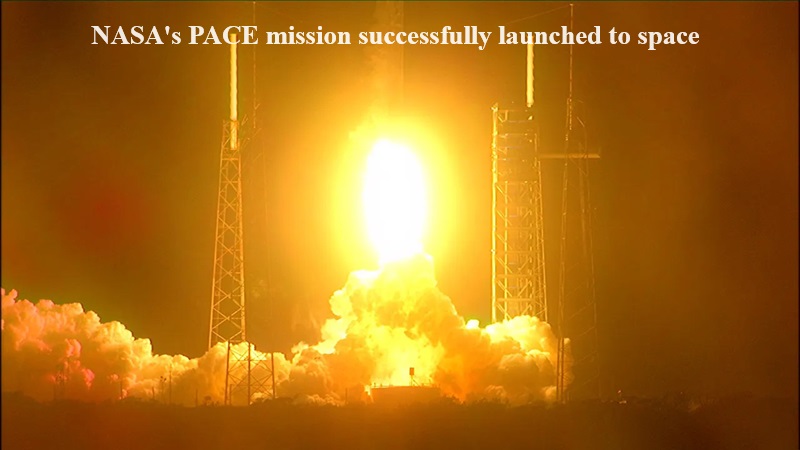
NASA’s PACE (Plankton, Aerosol, Cloud, ocean Ecosystem) mission achieved a successful launch on Thursday, February 8. A SpaceX Falcon 9 rocket carrying the PACE spacecraft lifted off from Cape Canaveral Space Force Station’s Space Launch Complex 40. NASA commemorated the milestone with a post on X, stating, “Today we put the PACE in space! The newest NASA Earth-observing satellite launched on Feb 8 at 1.33 am ET.”
In a subsequent post, NASA confirmed the separation of the PACE spacecraft from its SpaceX Falcon 9 rocket, announcing, “Separation confirmed—PACE is now flying free from its SpaceX Falcon 9 rocket. We’ll be keeping PACE with the NASA Earth spacecraft throughout its mission as it studies our ocean and clouds.”
PACE, as described by NASA, aims to investigate ocean health, air quality, and the repercussions of climate change for the betterment of humanity. “The satellite’s hyperspectral ocean colour instrument will allow researchers to measure oceans and other waterbodies across a spectrum of ultraviolet, visible, and near-infrared light,” stated NASA.
“This will enable scientists to track the distribution of phytoplankton and – for the first time from space – identify which communities of these organisms are present on daily, global scales. Scientists and coastal resource managers can use the data to help forecast the health of fisheries, track harmful algal blooms, and identify changes in the marine environment,” the statement added.
By leveraging advanced technologies aboard the PACE spacecraft, NASA aims to enhance our understanding of Earth’s intricate ecosystems and their interplay with environmental factors. This mission heralds a new era of scientific exploration and promises valuable insights into vital aspects of our planet’s health and sustainability.

Post Your Comments